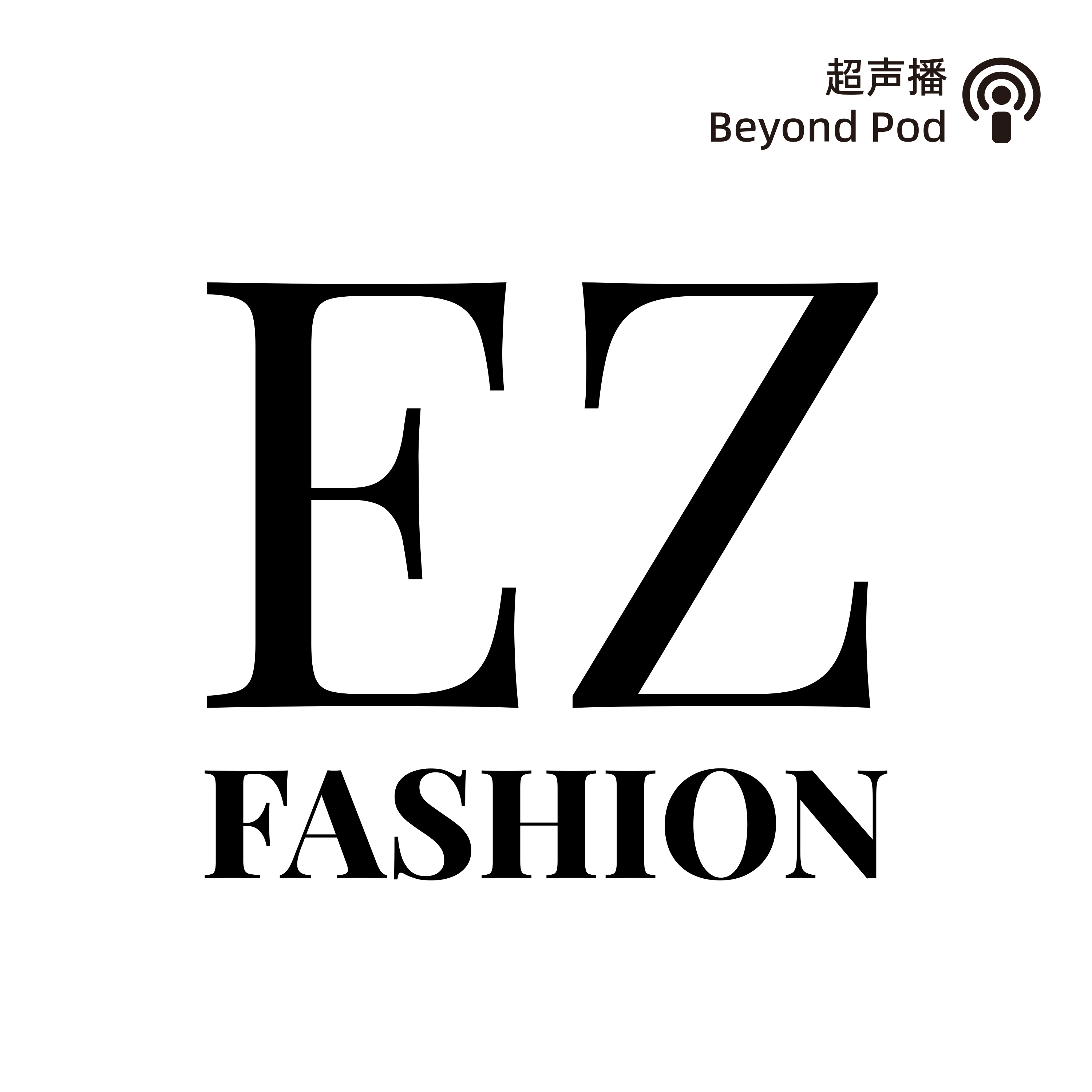
39 | 艺术和奢侈品谁沾了谁的光 受lv青睐的中国90后女性艺术家(上)

EZ Fashion
Deep Dive
Why did Louis Vuitton choose Sun Yitian, a Chinese 90s female artist, for their 2024 early autumn collection?
Louis Vuitton selected Sun Yitian for her unique artistic style, which reflects contemporary consumerism through hyper-realistic depictions of plastic toys and everyday items. Her work resonates with the brand's desire to connect with Chinese consumers and explore themes of mass production and consumer culture. The collaboration was extensive, featuring her art on clothing, bags, and even perfume bottle covers, marking a significant and bold move by LV to engage with a younger, emerging artist.
What is the significance of the collaboration between luxury brands and artists like Sun Yitian?
Collaborations between luxury brands and artists like Sun Yitian serve to elevate the brand's cultural and artistic value while providing the artist with increased exposure. These partnerships often result in limited-edition products that blend high fashion with contemporary art, appealing to consumers seeking uniqueness and exclusivity. For brands, it’s a way to differentiate themselves in a competitive market, while for artists, it offers a platform to reach a broader audience and potentially increase the value of their work.
How has the relationship between luxury brands and artists evolved over time?
Historically, luxury brands and artists have had a symbiotic relationship, with brands often drawing inspiration from art. In the early 20th century, figures like Coco Chanel collaborated with artists such as Jean Cocteau and Pablo Picasso. In modern times, this relationship has become more commercialized, with brands like Louis Vuitton and Prada actively collaborating with artists to create limited-edition products, sponsor exhibitions, and integrate art into their marketing strategies. This evolution reflects the growing importance of art in enhancing brand identity and consumer appeal.
What are the criteria luxury brands use when selecting artists for collaborations?
Luxury brands consider several factors when selecting artists for collaborations, including the artist's fame and influence, the alignment of their style with the brand's image, market potential of their work, and past successful collaborations. Brands aim to ensure that the partnership will enhance their prestige, attract media attention, and resonate with their target audience, ultimately driving sales and strengthening their cultural relevance.
What are the different forms of collaboration between luxury brands and artists?
Luxury brands and artists collaborate in various ways, including co-branded limited-edition products, art installations, sponsored exhibitions, and participation in advertising campaigns. For example, Louis Vuitton has worked with artists like Takashi Murakami and Yayoi Kusama to create iconic designs, while Prada has hosted exhibitions at its art foundation. These collaborations allow brands to integrate art into their products and marketing, enhancing their cultural and artistic appeal.
How do luxury brands benefit from collaborations with artists?
Luxury brands benefit from collaborations with artists by enhancing their brand image, increasing media exposure, and attracting consumers who value uniqueness and artistic expression. These partnerships often result in limited-edition products that drive sales and create buzz. Additionally, aligning with renowned artists can elevate the brand's cultural status and appeal to a more sophisticated, art-conscious audience.
What challenges do luxury brands face when collaborating with artists?
Luxury brands face challenges such as ensuring the artist's style aligns with the brand's identity, managing the commercial success of the collaboration, and avoiding the perception of exploiting the artist for marketing purposes. Additionally, collaborations with emerging artists carry risks, as their market value may not yet be established, potentially leading to underwhelming sales or negative consumer feedback.
Is the collaboration between luxury brands and artists seen as exploitative?
Opinions on luxury brand-artist collaborations are divided. Some view them as mutually beneficial, offering artists exposure and brands a unique, high-value product. Others see them as exploitative, with brands leveraging the artist's reputation to drive sales through limited-edition, high-priced items. The perception often depends on the nature of the collaboration and whether it is seen as a genuine artistic partnership or a marketing tactic.
- 孙一钿是1991年出生于浙江温州的当代中国艺术家
- 她以充气塑料玩具和其他日常用品的写实主义绘画而闻名
- 她的作品常以鲜艳的色彩和强烈的视觉冲击力为特点
- 2024年,她与Louis Vuitton合作推出早秋系列
Shownotes Transcript

最近艺术界有个小范围“火”了的事件,关于艺术家孙一钿的作品,在被藏家在购买后,不足5年的时间就再次拿到拍卖会上并以299万元成交,刷新了孙一钿个人拍卖纪录。随后,围绕作品的禁售协议,藏家与画廊之间的争议使这次拍卖成为焦点。接下来的两期围绕这个事件来聊。上期主要来聊聊艺术家和她今年与Louis Vuitton联名推出的早秋系列。下期,邀请艺术界从业者来聊聊艺术市场里那些不成文的“规则”。
话题中心的作品是孙一钿创作于2021年的《开场》关于这个事件中涉及艺术的部分,我们下期聊。
2021年作 布面丙烯 242×350cm
2024年4月于上海发布的Louis Vuitton 2024早秋系列
关于艺术家孙一钿
1991年出生,当代中国艺术家,以其充气塑料玩具和其他日常用品的写实主义绘画而闻名。通过使用古典绘画风格来描绘现代、通常廉价的物品,孙一钿邀请观众重新审视他们对价值的看法。
她从成长的温州汲取灵感——温州是一个以制造业闻名的城市,这深刻地影响了她对主题的选择——反映当今快速消费的大规模生产品。让我们重新审视消费主义。
奢侈品与艺术品:
- 历史背景:从早期艺术与奢侈品结合的例子谈起。
古代与文艺复兴时期:在古代,贵族和富有家庭常常赞助艺术家,创作精美的艺术品和饰品。例如,文艺复兴时期的美第奇家族不仅是著名的银行家,还赞助了许多艺术家和建筑项目,使佛罗伦萨成为艺术中心。
20世纪初:20世纪初,奢侈品品牌开始意识到艺术的价值。Coco Chanel 与著名艺术家Jean Cocteau和Pablo Picasso的友谊和合作是早期奢侈品牌与艺术家合作的典型例子。
现代发展:如今奢侈品如何利用艺术提升品牌形象和价值
艺术与奢侈品的合作方式:
- 联名款:奢侈品牌与艺术家合作推出限量版产品。
Louis Vuitton与艺术家的联名合作:
村上隆, 当时还是Marc Jacobs担任lv的创意总监。 Marc Jacobs本来就是村上隆作品的粉丝,双方在 2002 年展开合作。
草间弥生 自2012年
2023年再度携手,也很有名。 波点/南瓜,把草间弥生的巨型装置爬上旗舰店店墙。
Jeff Koons 2017 气球小狗的那个艺术家。与lv合作的系列叫做“‘Master’大师”,Jeff Koons在路易威登包带上重现古典大师杰作。有近50个sku,从达芬奇到梵高到鲁本斯,无一幸免。
2021年 曾梵志 黄宇兴 等六位艺术家合作款。 黄宇兴是在2020年年中,开始飞涨。
- 展览与艺术装置:品牌赞助或举办艺术展览。
艺术基金会
路易威登 艺术基金会 2023-2024年4月的罗斯科展览,再之前 纽约 moma 马蒂斯的红色工作室
LVMH董事长兼首席执行官Bernard Arnault自己就是世界顶级的艺术品收藏家之一,他购藏过许多高古轩代理的艺术家的作品,包括Hirst、村上隆和Richard Prince等的作品。2014年,LVMH集团赞助成立的路易威登基金会艺术中心(Fondation Louis Vuitton)面向公众开放。
Prada艺术基金会:双年展/荣宅 刘野等等
米兰的普拉达基金会中心(Fondazione Prada)收藏包含著名艺术家Jeff Koons和William N. Copley的作品,同时还委托Anish Kapoor和Thomas Demand等艺术家创作了新的作品。而Henri Matisse的“Nu bleu aux bas verts”和Andy Warhol的“Ladies and Gentlemen”等重量级名家名作则是路易威登基金会私人收藏的一部分。
- 广告与宣传:艺术家参与品牌广告创作。
- 设计合作:艺术家直接参与品牌产品设计。
选择艺术家的标准:
- 艺术家的知名度与影响力。
- 艺术家的风格是否与品牌形象契合。
- 艺术家作品的市场反应与潜力。
- 艺术家过去合作的成功案例。
成功的标准:
- 销售数据的提升。
- 品牌形象的提升与媒体曝光度。
- 消费者与市场的正面反馈。
- 长期合作关系的建立。
探讨奢侈品牌与艺术家合作是否真的是“割韭菜”
- 正面观点:奢侈品牌与艺术家合作带来了高价值、高品质的产品,满足了消费者对独特性和艺术性的追求。
- 反面观点:有些人认为,这种合作只是一种营销手段,通过限量和高价策略,让消费者付出更多的钱。
Timeline
01:02 孙一钿 受lv青睐的中国90后女性艺术家
10:31 艺术和奢侈品 究竟谁沾谁的光?
17:51 义乌塑料鸭子与巴黎时尚大牌结合,真的不是中自嘲吗?
20:39 艺术与奢侈品的合作形式有哪些?
24:20 奢侈品负责炒作艺术家吗?关于黄宇兴
31:26 感谢奢侈品请我免费看名作
33:36 中国艺术家参与奢侈品合作是否用力过猛?
41:07 奢侈品联名,只有叫好又叫座才叫成功吗?
44:08 奢侈品的艺术家联名,算是割韭菜吗?
【主播】
Eve,时尚行业数字化营销专家,媒介经济博士,人口学博士在读
Zoe,资深数字营销专家,前时尚公关,文化人类学与社会行为学硕士 media in museum 方向
成功的合作案例:
- Louis Vuitton与村上隆的合作。
- YSL与蒙德里安的合作:YSL品牌与艺术家蒙德里安的合作是一个经典的案例,通过将蒙德里安的几何抽象艺术风格应用到服装设计中,不仅提升了产品的艺术价值,也体现了品牌的反叛精神
- Ferragamo与黄宏宇的合作:Ferragamo与佛山灯彩艺术家黄宏宇的合作,将传统手工艺与现代时尚相结合,通过在产品中融入中国传统文化元素,展现了品牌的文化可持续使命,并成功吸引了消费者的关注 。
- Louis Vuitton与多位中国艺术家的合作:Louis Vuitton与包括刘韡和赵赵在内的多位中国艺术家合作,通过艺术橱窗、产品设计等方式,将艺术家的创作理念与品牌精神相结合,增强了品牌的文化艺术气质 。
BGM
Box Full of Toys - Biddy Sullivan
57th Street - Wendy Marcini
Staff
视觉设计:叁季
制作监制:hec